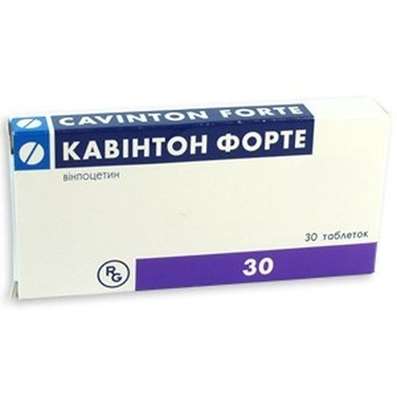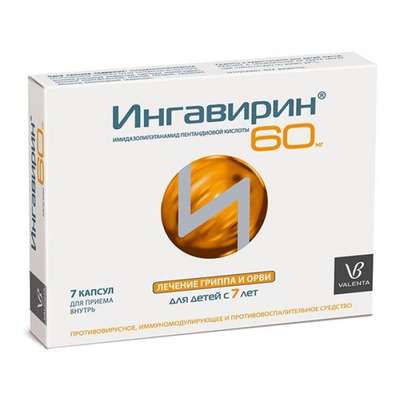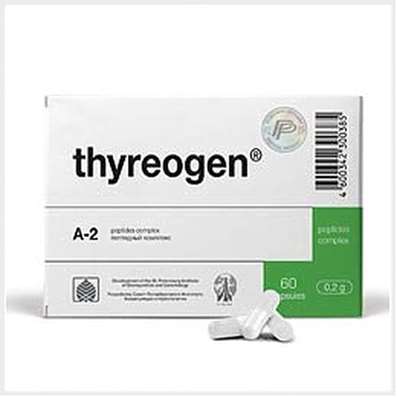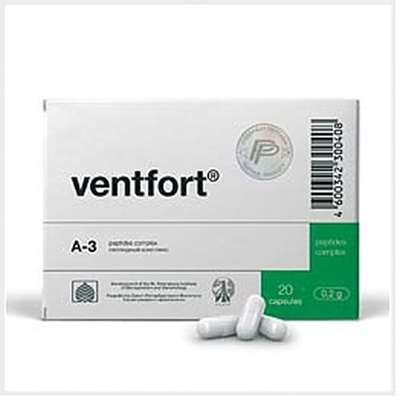Instruction for use: Hydroxyethylaminoadenine
I want this, give me price
Trade name of the drug – Etadex-MEZ, Etaden eye's drops 0,5%
The Latin name of the substance Hydroxyethylaminoadenine
Hydroxyaethylaminoadeninum (genus. Hydroxyaethylaminoadenini)
Chemical name
8- (2-Oxyethyl) aminoadenine hydrobromide
Gross formula
C7H10N6O.HBr
Pharmacological groups:
Regenerants and reparants
Stimulators of hematopoiesis
Ophthalmic products
The nosological classification (ICD-10)
B00.5 Herpetic eye disease: Recurrent ophthalmoherpes; Herpetic keratitis; Ophthalmoherpes; Herpetic conjunctivitis; Herpetic uveitis; Herpetic keratitis; Herpetic stromal keratitis without ulceration of the cornea; Herpetic stromal keratitis with ulceration of the cornea;Eye shape Herpes zoster; Herpetic keratoconjunctivitis; Conjunctivitis herpeticum; Herpetic conjunctivitis; Deep forms of ophthalmoherpes; Superficial herpetic keratitis
D72.8.0 * Leukopenia: Autoimmune neutropenia; Congenital neutropenia; Granulocytopenia; Idiopathic and drug-induced leukopenia; Idiopathic neutropenia; Leukopenia aplastic; Leukopenia radiation; Leukopenia with radiation therapy; Radiation leukopenia; Hereditary neutropenia; Neutropenia in patients with AIDS; Periodic neutropenia; Radiation leukopenia; Persistent neutropenia; Febrile neutropenia; Two-stage cytopenia; Radiation cytopenia; Neutropenia is cyclic
H16.0 Corneal ulcer: Allergic corneal ulcer; Allergic corneal ulcer; Erosion of the cornea; Regional ulcer; Purulent corneal ulcer; Corneal ulcer; Trophic ulcers of the cornea; Traumatic erosion of the cornea; Ulceration of the cornea; Keratitis with corneal ulceration; Ulcerative keratitis; Purulent corneal ulcers; Epithelial point keratitis; Ulceration of superficial corneal layers; Keratomalacia; Corneal ulcer; Recurrent erosions of the cornea; Recurrent ulcers of the cornea; Bacterial corneal ulcer; Septic ulcer of the cornea; Corneal edge ulcer
H18.1 Bullous keratopathy: Bullous dystrophic changes of the cornea
H18.4 Corneal degeneration: corneal infiltrate; Secondary corneal dystrophy; The destruction of the cornea; corneal Dystrophy; Keratitis with corneal destruction; Violation of corneal trophism; Violation of the integrity of the cornea; Violation of the integrity of the corneal epithelium; Primary corneal dystrophy; Degenerative corneal disease
H18.7 Other corneal deformities: Corneal cornea; Microdefects of the corneal epithelium; Postoperative descemetitis; Damage to the cornea of the eye
H18.8 Other specified diseases of the cornea
H18.9 Corneal disease, unspecified: Corneal dryness; Disease of the cornea in violation of the integrity of the epithelium; Infectious-inflammatory lesion of the cornea; Infectious Keratopathy; Initial epithelial-endothelial dystrophy; Damage to the cornea of the eye; Irritation of the cornea; Trophic changes in the cornea
H57.8 Other unspecified diseases of eye and adnexa: Intraocular hemorrhage; Inflammation of the eye; Secondary hyperemia of the eye; Burning sensation in the eyes; Protection of the anterior surface of the eye; Itching in the eyes; Xerosis; Sensation of itching and burning eyes; Dry eye syndrome; Dry eyes; Xerophthalmia
H59.9 Lesion of eye and adnexa after medical procedures, unspecified: Condition after thermal conjunctival burns; Condition after thermal burns of the cornea; Condition after surgical burns of conjunctiva; Condition after surgical burns of the cornea
K25 Stomach ulcer: Helicobacter pylori; Pain syndrome with gastric ulcer; Pain syndrome with peptic ulcer of stomach and duodenum; Inflammation of the gastric mucosa; Inflammation of the mucosa of the gastrointestinal tract; Benign ulcer of the stomach; Disease of the stomach and duodenum, associated with Helicobacter pylori; Exacerbation of gastroduodenitis against ulcer disease; Exacerbation of peptic ulcer; Exacerbation of gastric ulcer; Organic GI disease; Peptic ulcer of the stomach and duodenum; Postoperative Stomach Ulcer; Recovering ulcers; Symptomatic Stomach Ulcers; Chronic inflammatory disease of the upper gastrointestinal tract associated with Helicobacter pylori; Helicobacter pylori eradication; Erosive-ulcerative lesions of the stomach; Erosive lesions of the stomach; Erosion of the gastric mucosa; Peptic Ulcer; Stomach ulcer; Stomach ulcer; Ulcerative lesions of the stomach; Symptomatic ulcers of the stomach and duodenum
K26 Ulcer of duodenum: Pain syndrome with duodenal ulcer; Pain syndrome with peptic ulcer of stomach and duodenum; Disease of the stomach and duodenum, associated with Helicobacter pylori; Exacerbation of peptic ulcer; Exacerbation of duodenal ulcer; Peptic ulcer of the stomach and duodenum; Recurrence of duodenal ulcer; Symptomatic ulcers of the stomach and duodenum; Helicobacter pylori eradication; Erosive-ulcerative lesions of the duodenum; Erosion-ulcerative duodenal lesions associated with Helicobacter pylori; Erosive lesions of the duodenum; Peptic ulcer disease of the duodenum; Ulcerative duodenal lesions
L58 Radiation dermatitis radiation: Radiation damage to the skin; Radiation skin lesions; Radiation damage to the skin and mucous membranes; Skin lesion with radiation therapy; Irritation after exposure to X-rays; Radiation damage to the skin; Radio-epileleitis; Radiation acute syndrome
T14.1 Open wound of unspecified body region: Secondary healing processes; Sluggishly granulating wounds; Sluggishly healing wounds; Sluggish wounds; Deep Wounds; Purulent wound; Granulating wounds; Prolonged non-healing wound; Long-lasting non-healing wound and ulcer; Long-lasting non-healing soft tissue wound; Healing of wounds; Wound healing; Capillary bleeding from superficial wounds; Bleeding wound; Radiation Wounds; Slowly epithelializing wounds; Minor cuts; Suppurated wounds; Violation of wound healing processes; Breach of skin integrity; Violations of the integrity of the skin; Violations of the integrity of the skin; Small cuts; Uninfected wounds; Uncomplicated wounds; Operating wound; Primary treatment of surface contaminated wounds; Primary wound treatment; Primary-delayed treatment of wounds; Poorly cicatrizing wound; Poor wound healing; Bad wound; Superficial injury; Superficial wound with mild exudation; Wound; The wound is large; Bite wound; Wound process; Wounds; Wound healing wounds; Stump Wounds; Wounds for gunshot; Wounds with deep cavities; Difficult healing wounds; Difficult wounds; Chronic Wounds
T26 Thermal and chemical burns, limited to the eye area and its adnexa: Condition after thermal conjunctival burns; Condition after thermal burns of the cornea; Aseptic eye burn; Eye Burn; Thermal eye burns; Thermal damage to the cornea; Corneal burn; Irradiated eye burn; Chemical eye burn; Chemical burn of the cornea; Chemical damage of the cornea; Thermal burns of the conjunctiva; Thermal burns of the cornea; Thermal eye burn; Condition after surgical burns of conjunctiva; Condition after surgical burns of the cornea
T30 Thermal and chemical burns of unspecified site: Pain syndrome with burns; Pain in burns; Pain with burns; Sluggishly healing post-burn wounds; Deep burns with a wet scab; Deep burns with abundant compartments; Deep burn; Laser burn; Burn; Burn of rectum and perineum; Burn with mild exudation; Burn disease; Burn injury; Superficial burn; Superficial burn of I and II degree; Superficial skin burns; After-burn trophic ulcer and wound; Post-burn complication; Loss of fluid in burns; Sepsis burn; Thermal burns; Thermal skin lesions; Thermal burn; Trophic after-burn ulcers; Chemical burn; Surgical burn
Z100 * CLASS XXII Surgical practice: Abdominal surgery; adenomectomy; Amputation; Coronary angioplasty; Angioplasty of the carotid arteries; Antiseptic skin treatment for wounds; Antiseptic Hand; Appendectomy; atherectomy; Balloon coronary angioplasty; Vaginal hysterectomy; The coronary bypass; Interventions in the vagina and cervix; Interventions on the bladder; Intervention in the mouth; Restoration and reconstructive surgery; Hand hygiene of medical personnel; Gynecologic surgery; Gynecological intervention; Gynecological surgery; Hypovolemic shock during operations; Disinfection of purulent wounds; Disinfection of wounds edges; Diagnostic intervention; Diagnostic procedures; Cervical Diathermocoagulation; Long-surgery; Replacing the fistula catheters; Infection in orthopedic surgery; Artificial heart valve; cystectomy; Short-term outpatient surgery; Short-term operation; Short surgical procedures; Krikotireotomiya; Blood loss during surgery; Bleeding during surgery and in the postoperative period; Kuldotsentez; laser photocoagulation; laser coagulation; retinal laser coagulation; Laparoscopy; Laparoscopy in Gynecology; CSF fistula; Small gynecological operations; Small surgical procedures; Mastectomy and subsequent plastic; mediastinotomy; Microsurgical operations on the ear; Mukogingivalnye operation; suturing; Minor surgery; neurosurgical operation; Immobilization of the eyeball in ophthalmic surgery; testectomy; pancreatectomy; Perikardektomiya; The period of rehabilitation after surgery; The period of convalescence after surgery; Percutaneous transluminal coronary angioplasty; Pleural thoracentesis; Pneumonia postoperative and posttraumatic; Preparation for surgical procedures; Preparation for surgery; Preparation of the surgeon's hands before surgery; Preparation of the colon for surgical procedures; Postoperative aspiration pneumonia in neurosurgical and thoracic surgery; Postoperative nausea; Postoperative bleeding; postoperative granuloma; postoperative shock; The early postoperative period; myocardial revascularization; Radiectomy; gastric Resection; bowel resection; uterine Resection; liver Resection; enterectomy; Resection of part of the stomach; Reocclusion of the operated vessel; Bonding tissues during surgical procedures; Removal of sutures; Condition after eye surgery; Condition after surgery; Condition after surgery in the nasal cavity; Condition after gastrectomy; Status after resection of the small intestine; Condition after tonsillectomy; Condition after removal of the duodenum; Condition after phlebectomy; Vascular surgery; Splenectomy; Sterilization of surgical instruments; Sterilization of surgical instruments; sternotomy; Dental surgery; Dental intervention in periodontal tissues; strumectomy; Tonsillectomy; Thoracic surgery; Thoracic surgery; total gastrectomy; Transdermal intravascular coronary angioplasty; Transurethral resection; Turbinektomiya; Removal of a tooth; cataract surgery; Removal of cysts; tonsillectomy; Removal of fibroids; Removing the mobile primary teeth; Removing polyps; Removing broken tooth; Removal of the uterus body; Removal of sutures; Fistula likvoroprovodyaschih ways; Frontoetmoidogaymorotomiya; Surgical infection; Surgical treatment of chronic limb ulcers; Surgery; The surgery in the anal area; The surgery on the colon; Surgical practice; The surgical procedure; Surgical interventions; Surgery on the gastrointestinal tract; Surgical procedures on the urinary tract; Surgical procedures on the urinary system; Surgical intervention of the genitourinary system; Surgical procedures on the heart; Surgical manipulation; surgery; Surgery on the veins; Surgical intervention; Vascular surgery; Surgical treatment of thrombosis; Surgery; cholecystectomy; Partial gastric resection; hysterectomy; Percutaneous transluminal coronary angioplasty; Percutaneous transluminal angioplasty; Coronary artery bypass; tooth Extirpation; Extirpation of milk teeth; pulpectomy; pulsative cardiopulmonary bypass; tooth Extraction; teeth Extraction; cataract extraction; Electrocoagulation; endourological intervention; episiotomy; Etmoidotomiya; Complications after tooth extraction
CAS code
66813-29-14
Characteristics of the substance Hydroxyethylaminoadenine
White with a yellowish tinge crystalline powder.
Pharmacology
Mode action - anti-inflammatory, antiulcer, regenerating, leukopoietic.
Stimulates the exchange of nucleic acids (is a derivative of purine), activates protein synthesis. Accelerates and intensifies reparative processes, primarily in rapidly renewing tissues (epithelial and hematopoietic). With conjunctival application reduces swelling, pain, increases visual acuity. It contributes to the reparative regeneration of the corneal defects, the formation of the scar and the restoration of the smooth spherical surface of the cornea.
Application of the substance Hydroxyethylaminoadenine
Eye drops. Stimulation of the regeneration of the epithelium of the cornea with various eye lesions, accompanied by a violation of the integrity of its epithelium: epitheliopathy after infectious inflammatory diseases, dry eye syndrome (together with artificial tears), bullous keratopathy, initial epithelial-endothelial dystrophy, epithelial defects after ophthalmic operations Cataract extraction, surgical treatment of glaucoma) and post-operative descemetites, recurrent erosion, bacterial, fungal and herpetic ulcers tion etiology (complex treatment), burns, ulcerated keratitis and corneal lesion surface layers.
Parenterally. As a stimulant of the reparative processes in adults: peptic ulcer of the stomach and duodenum, leukopenia (radiation, drug), skin and mucous membrane damage (thermal and radiation), which do not heal the granulating wounds for a long time.
Contraindications
Hypersensitivity; For parenteral administration (in addition): leukemia (acute or chronic), disturbance of AV conduction of the heart.
Restrictions
Allergic reactions in the anamnesis.
Side effects of the substance Hydroxyethylaminoadenine
Allergic reactions (fever, itching, skin rashes); Systemic effects: dyspeptic phenomena, tachycardia.
Routes of administration
Conjunctival, IM, endovezikalno, presakralno.

 Cart
Cart





